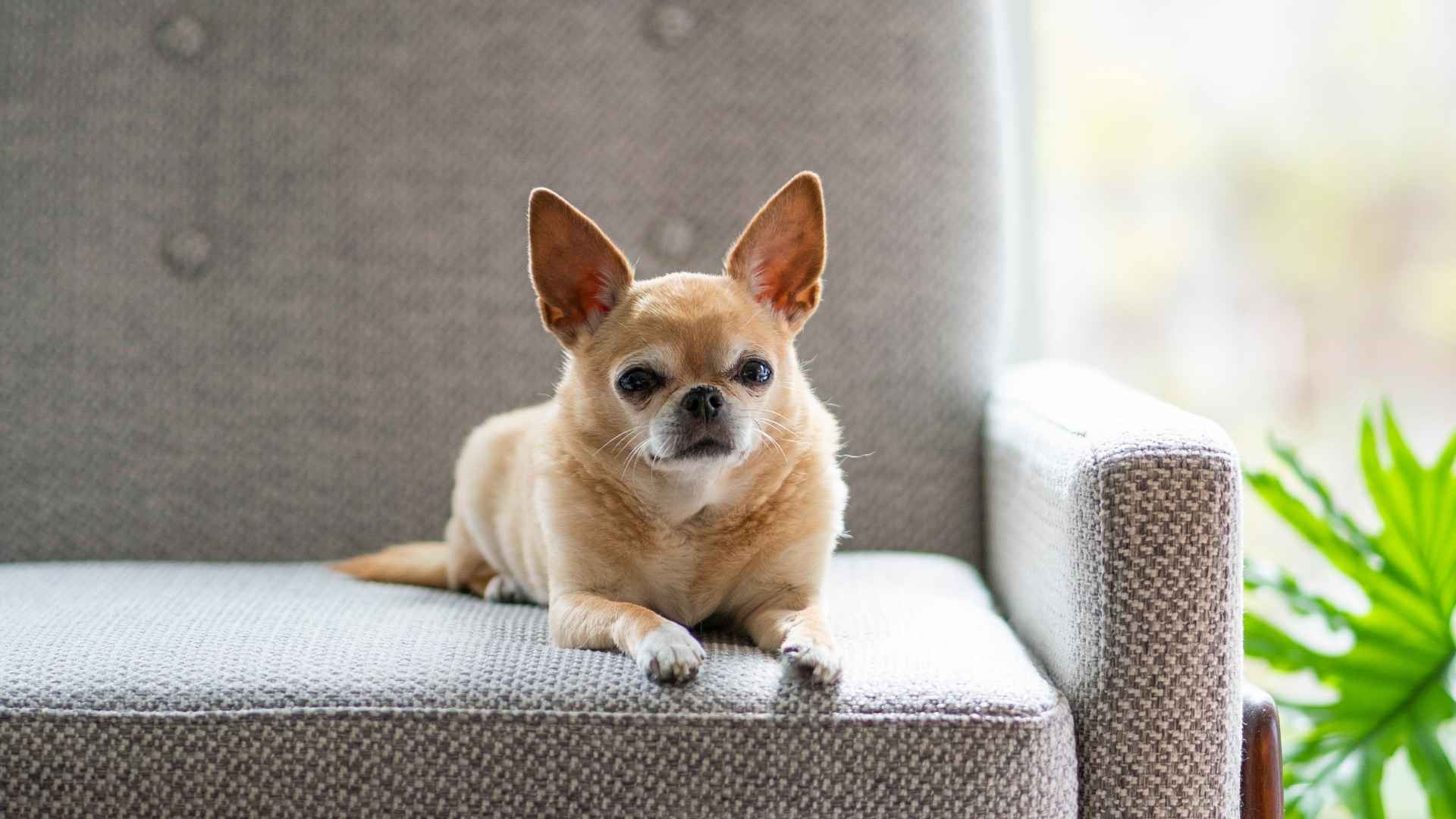Looking for a dog that’s more “type-B” than “type-A”? You know, the kind of pup who’s perfectly happy chilling on the couch and taking a leisurely stroll around the block? Whether you’re a busy city dweller, a first-time pet parent, or just a proud introvert, a low-maintenance and independent-minded dog breed might be your perfect match.
These dogs don’t demand marathon walks, endless grooming, or hours of training — they’re happy to keep things chill and easy. From tiny companions to bigger, laid-back pals, low-maintenance dog breeds come in all shapes and sizes. But hey, let’s be real — no dog is truly zero-maintenance. Every furry friend needs some love and care (yes, even the independent ones).
So if you’re ready for a loyal, easygoing buddy who won’t cramp your style, dive into our guide to the best low maintenance and most independent dog breeds and find your ultimate chill partner!
Low-maintenance Independent dog breeds
1. Dachshund
Meet the Dachshund—a charming little pup with a big personality and even bigger chest! Originally from Germany, this energetic breed is known for its short legs, floppy ears, and variety of coat types and colors.
Whether you call them doxies, wiener dogs, or sausage pups, one thing’s for sure—they leave a lasting impression. Available in standard and miniature sizes, their playful and spunky temperament stays consistent across the board.
Grooming a Dachshund depends on coat type. Smooth-coated ones have minimal grooming needs—just a quick daily rub with a chamois cloth. Long-haired Dachshunds require daily brushing, especially around the tail, chest, and legs, to prevent tangles.
While small, Dachshunds have a bold spirit. Originally bred to hunt badgers underground, they’re fearless and determined—traits that make them independent and sometimes a little stubborn, according to Britannica. Their hound instincts can kick in when they catch a scent, so don’t be surprised if your calls fall on deaf ears.
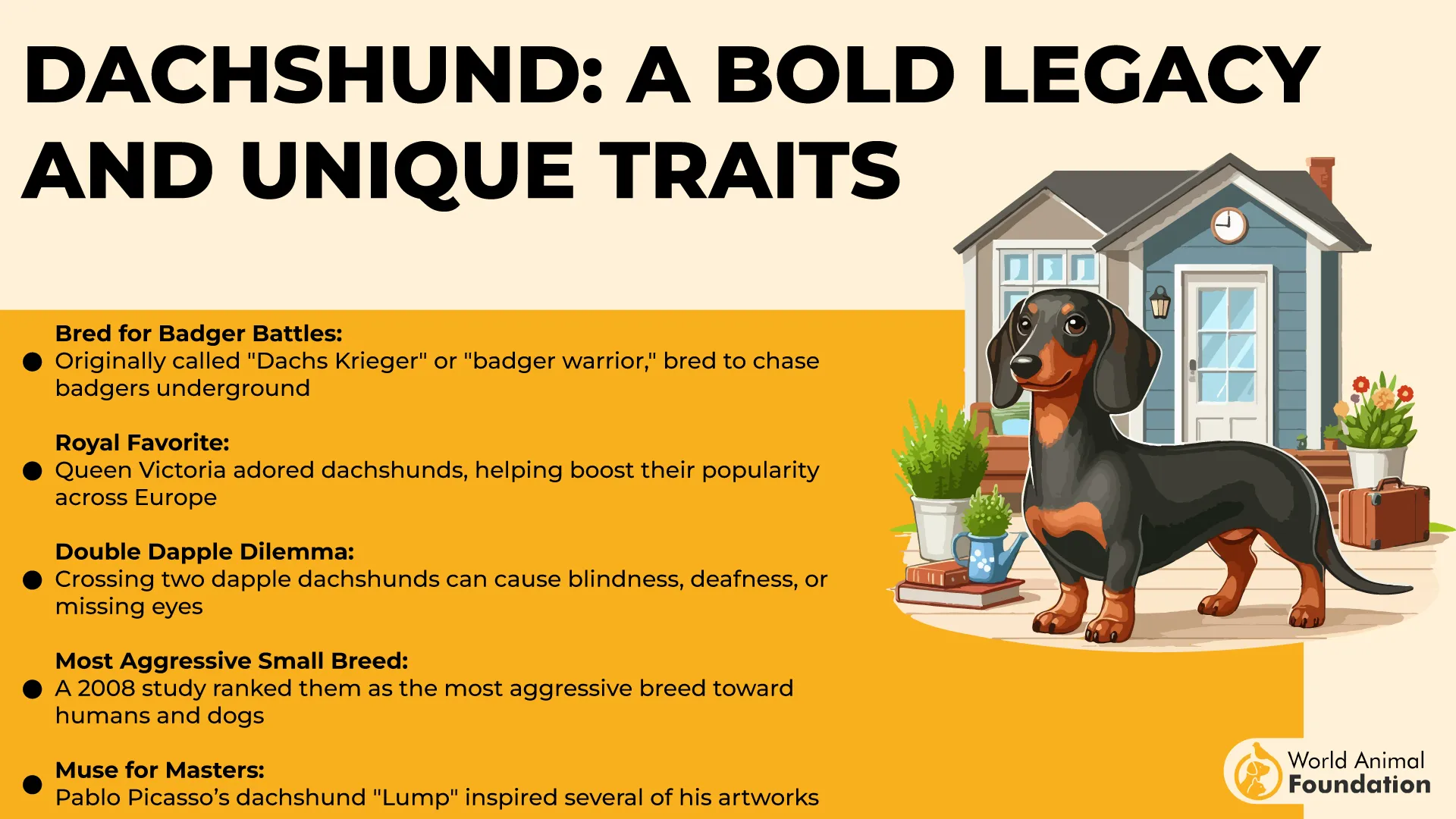
At home, Dachshunds are affectionate with their humans but may be standoffish with strangers or unfamiliar children. They make great watchdogs and are often vocal about it! Despite their small size, they’ll try their best to protect their pack. With enough playtime and attention, they make wonderfully cuddly companions for people of all ages.
Fun Fact:
The UK’s first successful cloned dog was a Dachshund named Winnie—her mini-me, aptly named Mini Winnie, was born after her owner won a cloning contest!
2. Greyhound
Graceful, gentle, and surprisingly laid-back, Greyhounds are among the most elegant dog breeds. Initially bred as sighthounds, they relied on keen vision and speed to chase prey. Their sleek, aerodynamic build gives them an edge in sprinting, but at home, they’re more about naps than races.
Despite being the fastest dog breed, Greyhounds have low energy levels indoors, earning them the nickname “40 mph couch potatoes.” Their calm demeanor and self-reliant nature make them well-suited for alone time and moderate daily exercise.
A 30-minute walk and brief playtime are usually enough. These dogs tend to enjoy independence and can thrive in apartment living, especially with access to a secure dog park for the occasional sprint and playing fetch. They’re a great option for owners who want a companion that doesn’t need much exercise but still enjoys a few active hours.
American Kennel Club (AKC) describes this breed as “Independent, gentle and noble”. Greyhounds are sweet, sensitive dogs who thrive in calm households. They’re affectionate with family, get along with other dogs, and can be shy with strangers without early socialization. They’re not natural watchdogs and tend to welcome rather than warn.
Their strong prey drive makes them a poor match for homes with small pets unless raised together. Off-leash freedom should only be in fenced areas, and early training is essential due to their independent nature.
Grooming needs are simple with their short, smooth coat—just occasional brushing is enough. Regular nail trimming, ear checks, and dental care are important. Since they’re sensitive to cold, a cozy sweater may be needed in winter.
Fun Fact:
Greyhounds are the fastest dog breed in the world, capable of reaching speeds up to 45 mph! But once they’ve had their sprint, they’re ready to curl up for a nap and snuggle in for the day.
3. French Bulldog
With their bat-like ears and charming, squishy faces, French Bulldogs—fondly known as Frenchies—have a way of winning hearts everywhere. These compact pups bring big personality to any space, thriving equally well in city living or country homes.
Bred as companion dogs, Frenchies are incredibly people-focused and dislike being left alone for long. They’re playful, affectionate, and a bit stubborn, but their clownish charm makes training enjoyable with a little patience.
Despite their serious expression, Frenchies are affectionate, gentle, and adaptable. They’re great with children, friendly with strangers, and usually get along with other dogs. Loyal and laid-back, they’re happiest right by your side.
French Bulldogs need only moderate exercise—a couple of short, regular walks and some indoor play will do. Due to their brachycephalic (flat-faced) build, they’re prone to breathing issues, so avoid strenuous activity and hot weather, states PetMD. Other breed-specific health concerns are allergies and joint problems. Regular vet checkups and a balanced lifestyle help them stay well. Frenchies typically live 10–12 years.
Grooming is minimal thanks to their short coat—just quick brushing is enough. Routine nail trims, dental care, and ear cleaning are essential to keep them healthy.
4. Basset Hound
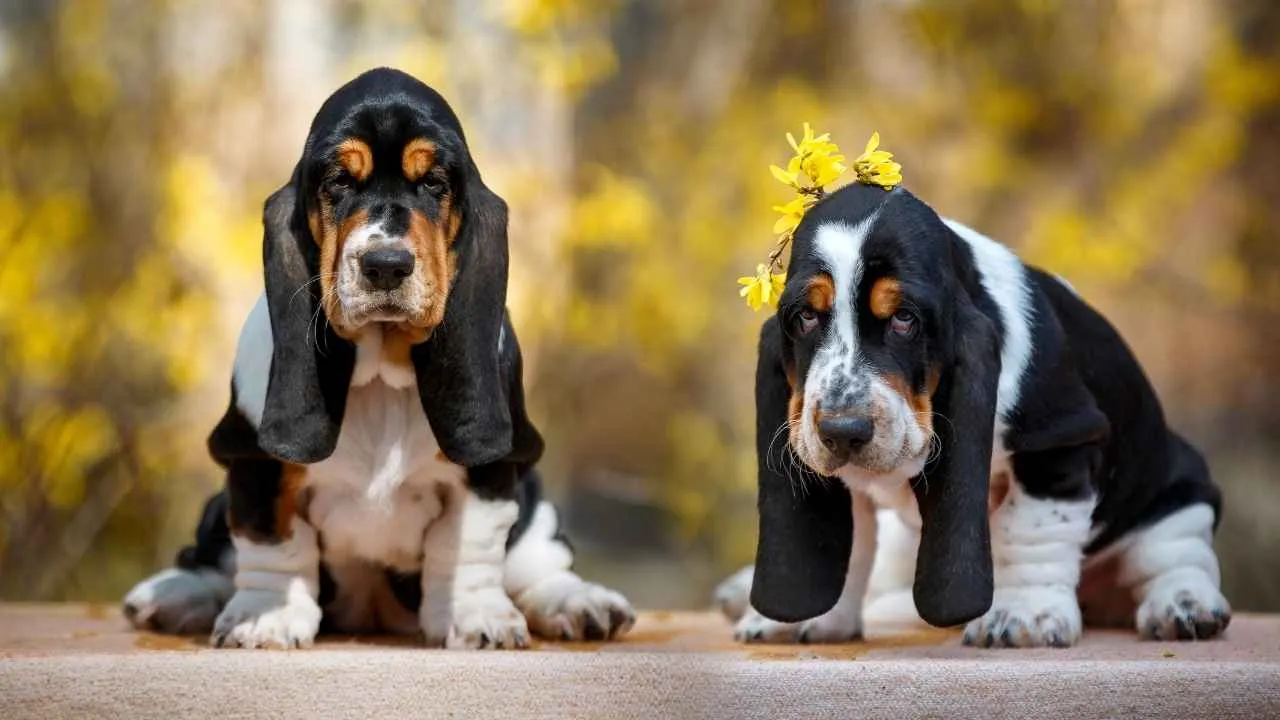
With soulful eyes, floppy ears, and a signature waddle, Basset Hounds are undeniably lovable. Originating in sixth-century France, these scent hounds are closely related to the Bloodhound and were bred for tracking.
Purina states Bassets have an extraordinary sense of smell, second only to Bloodhounds. Their long ears help lift scents toward their nose, while their droopy facial skin traps scent particles, making them exceptional in scent sports like AKC Scent Work and Tracking.

Though slow movers, Bassets follow scents with intense focus, often ignoring commands. Their stubborn, independent nature means training requires patience and consistent, food-based positive reinforcement.
At home, Bassets are relaxed companions who enjoy slow walks and long naps. Their love of food and low activity level means daily exercise and portion control are key to preventing weight gain.
Despite their strong will, Bassets are affectionate and alert, thriving with gentle socialization and guidance. They may not be fast, but they make great companions for easygoing adventures and quality family time.
Basset Hounds are prone to health issues linked to their unique build, including spinal problems, joint disorders (especially in the elbows), and obesity, which can worsen these conditions. They’re also susceptible to skin, eye, and ear infections, so regular checkups are important.
5. Chihuahua
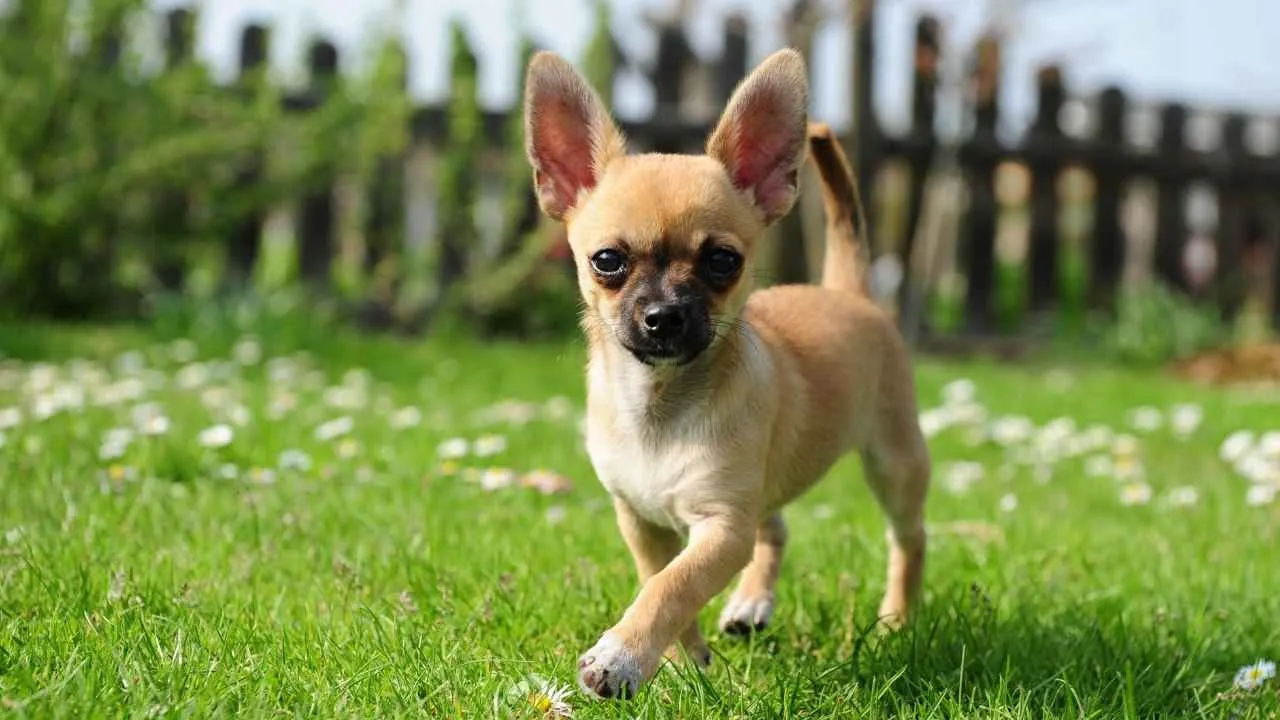
If you want a small dog with a big personality, the Chihuahua is a top choice. Known for tiny stature fierce loyalty and bold attitudes, Chihuahuas form strong bonds and love being close to their humans.
Chihuahuas have a rich history dating back to 16th-century Mexico, gaining popularity in the U.S. by the early 1900s and officially recognized by the AKC in 1904.
Measuring 5–8 inches tall and weighing about 6 pounds, Chihuahuas come in smooth or long coats and two head shapes—“apple” and “deer.” Their coat colors vary widely, from solids to brindles and stripes.
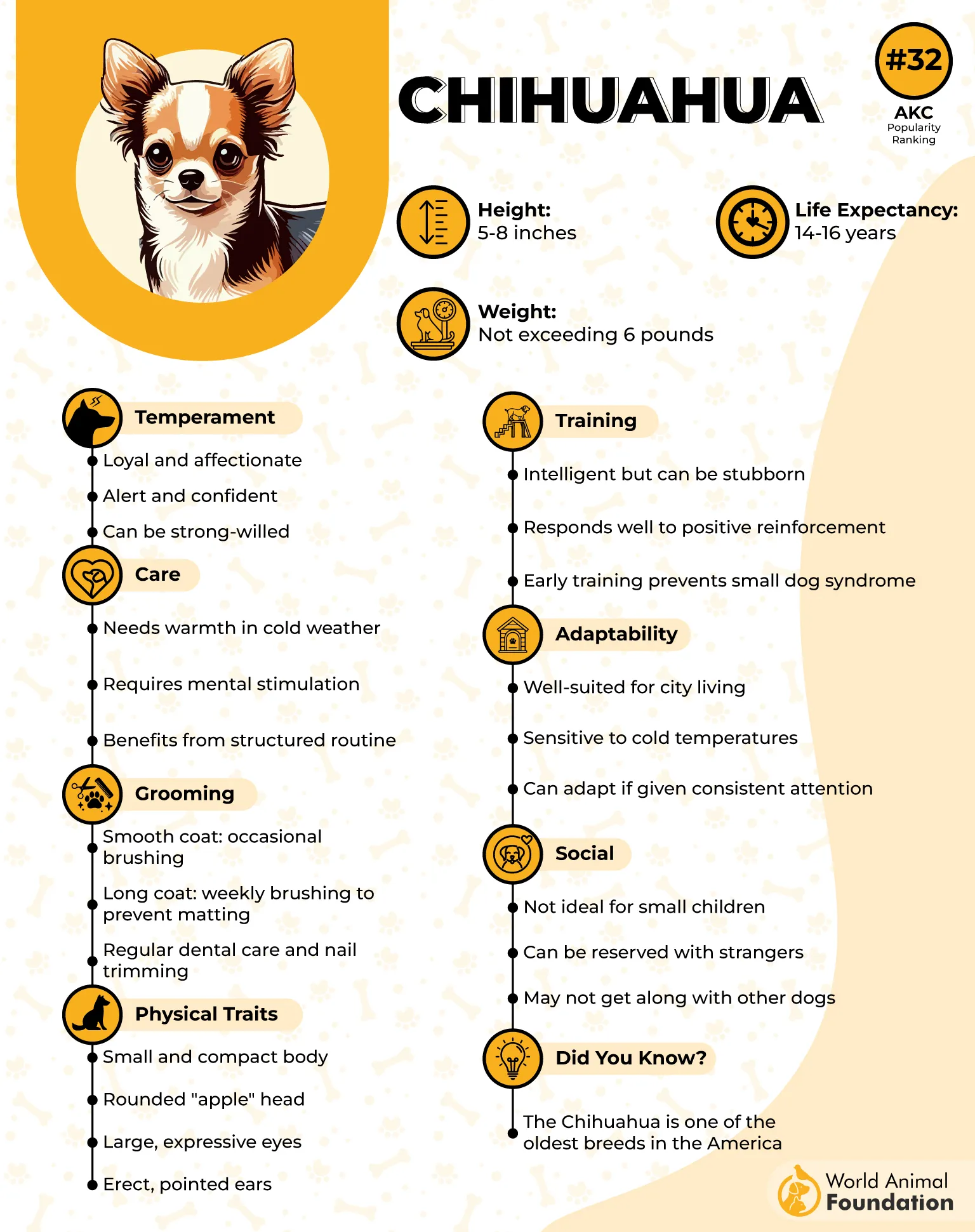
With a spirited and expressive nature, Chihuahuas can be playful and alert or shy and reserved. Proper socialization is essential, as they may be vocal around strangers and other pets.
Despite their size, they need daily exercise and mental stimulation through walks, play, and puzzles. Avoid over-carrying to prevent dependency and separation anxiety, states PetMD.
Chihuahuas can get along with children and other pets if introductions are calm and supervised, but their fragile size means gentle handling is a must.
Smooth-coated Chihuahuas don’t need much grooming thanks to their short hair, while long haired Chihuahuas varieties require more frequent or weekly brushing to keep their coats tangle-free.
6. Cavalier King Charles Spaniel
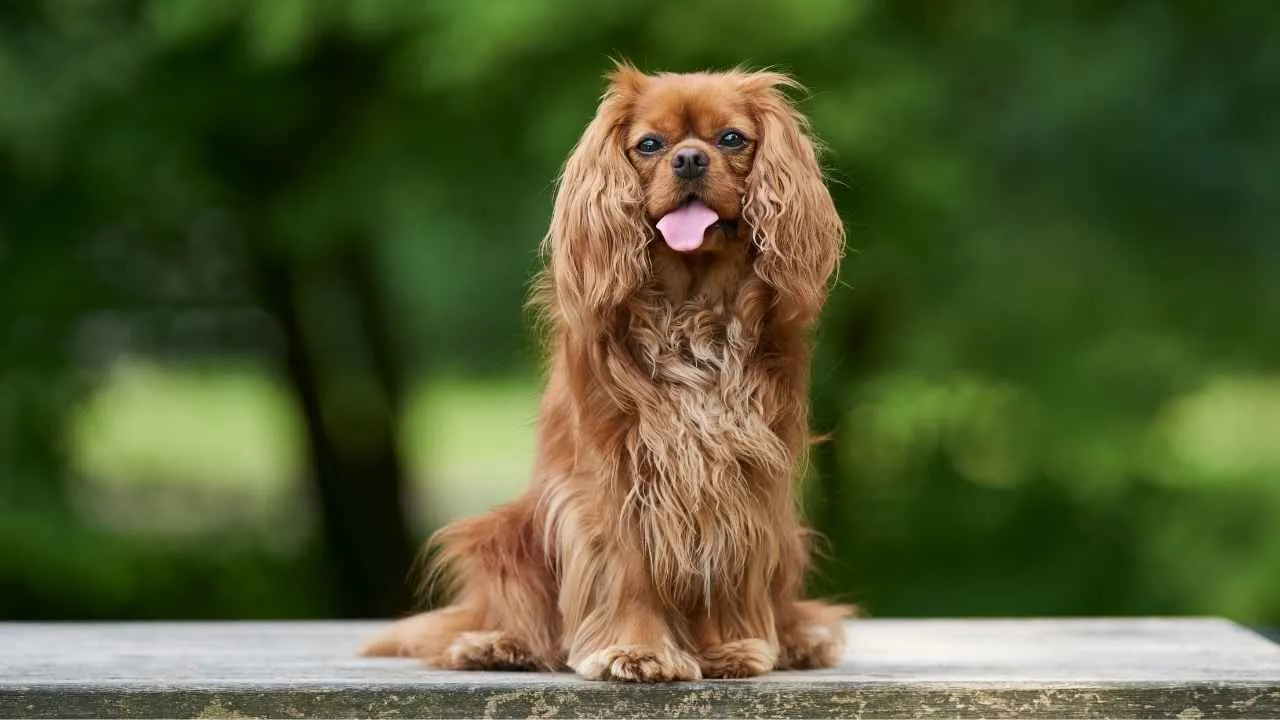
Cavalier King Charles Spaniels are charming, affectionate dogs with a royal heritage. Recognized by the AKC in 1995, they are one of the largest toy breeds, known for their silky coats and expressive eyes.
These gentle, playful companions thrive on human interaction and are great with kids and other pets. Early socialization helps shy puppies become confident, well-rounded dogs.

Though small, Cavaliers need regular exercise—a mix of play and a 30- to 60-minute daily walk keeps them happy and stimulated. They enjoy games like fetch and benefit from consistent recall training due to their chasing instinct.
Training is usually easy with this eager-to-please breed, which responds well to positive reinforcement. Their intelligence shines in agility and obedience tasks.
Grooming requires regular brushing (3–4 times weekly) to prevent tangles, especially around ears and feet. Some owners trim their coats for easier upkeep, while baths are needed only when dirty.
Cavaliers dislike being left alone for long and can develop separation anxiety, showing behaviors like barking or chewing. They do best in homes with someone around most of the time.
For a loving, intelligent, and adaptable companion, the Cavalier King Charles Spaniel is an excellent choice, offering loyalty and joy whether on the couch or outdoors.
7. Bullmastiff
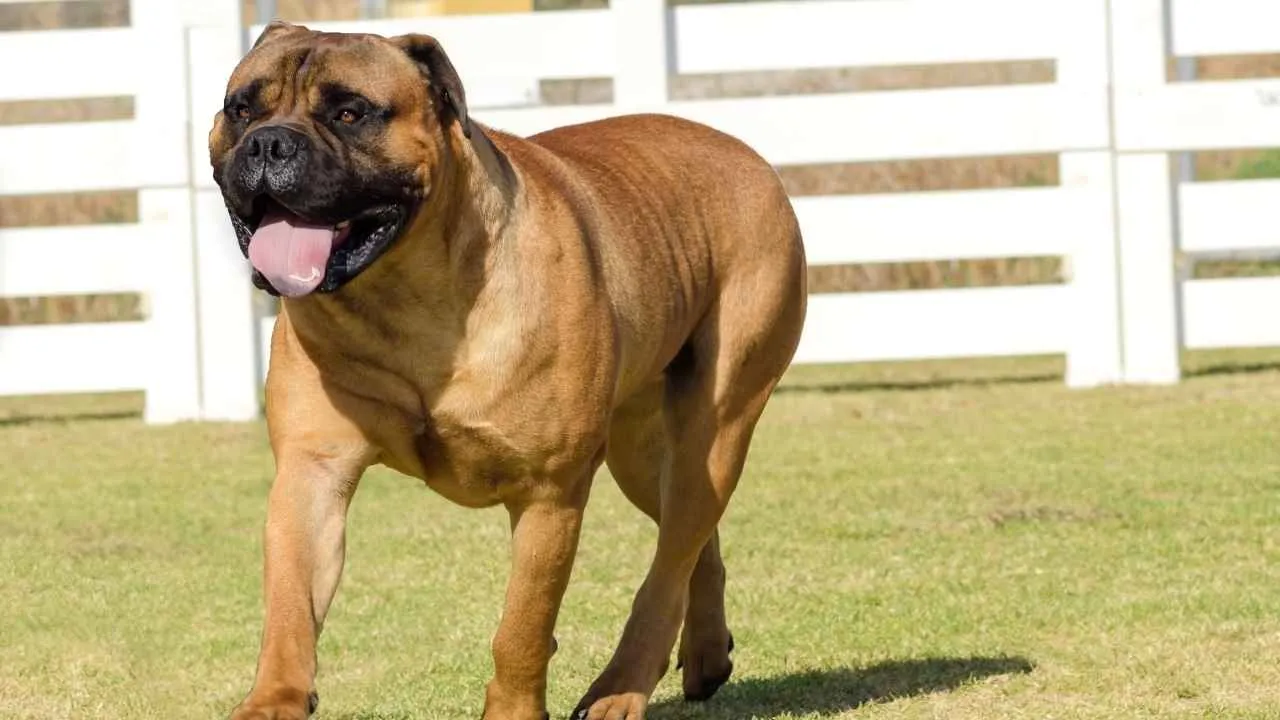
Bullmastiffs are gentle giants—protective, loyal, and affectionate. Despite their imposing size, they love snuggling and thrive on close companionship.
Bred in 19th-century England to guard estates, Bullmastiffs combine Mastiff strength with Bulldog determination. Calm and versatile, they adapt well to family life, therapy work, and competitions.
Their exercise needs are moderate—daily walks and playtime keep them healthy. Their short coat requires minimal grooming, though drooling is common. They do well in apartments if given enough activity and companionship.
Training demands patience and consistency due to their independent personality. Confident handlers who balance structure with affection succeed best. Early socialization is key, especially because of their guarding instincts.
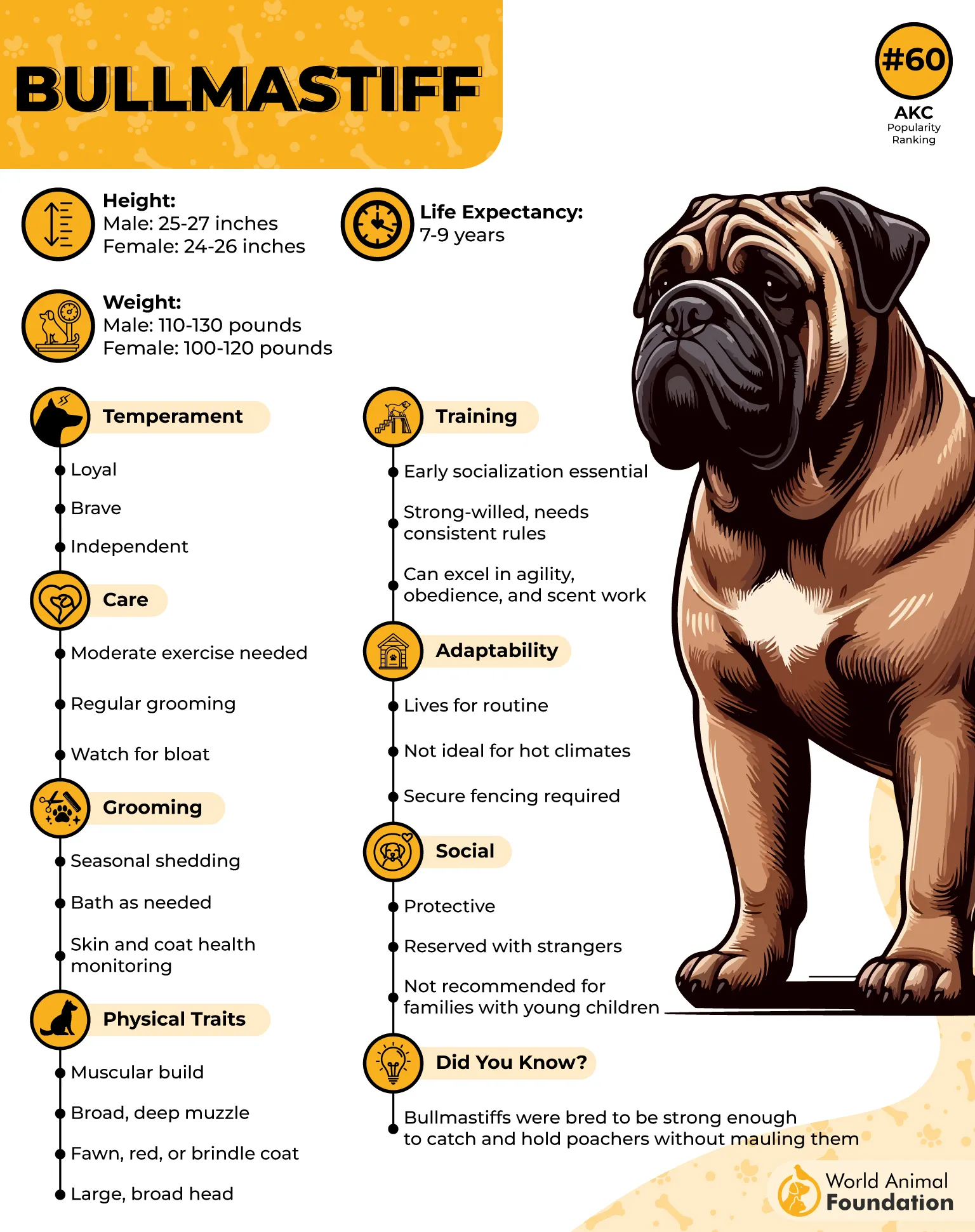
Bullmastiffs are large dogs, males can reach 130 pounds. Though they are gentle with kids but need supervision due to their size. They prefer indoor life and can overheat easily, so shaded outdoor areas are best.
Health concerns include hip/elbow dysplasia, hypothyroidism, and heart issues. Regular vet checkups and monitoring skin health are essential.
Thanks to their short coats, Bullmastiffs are low shedders. Grooming is simple: daily brushing, just a few baths, regular ear cleaning, and nail trims keep them comfortable and healthy.
Conclusion
If you’re looking for a dog that doesn’t demand constant grooming or attention, these low-maintenance breeds offer the perfect balance. From the adaptable Italian Greyhound and barkless Basenji (nicknamed Barkless dog) to the totally devoted Shiba Inu and charming Boston Terrier, each has its own blend of independence and affection.
With minimal shedding, consistent exercise, and enough training, even little dogs like the Shih Tzu or wire-haired varieties can thrive with just a few hours of daily care. While certain breeds are undeniably high maintenance, the right low-shedding, low-fuss pup can be a great dog that fits effortlessly into your lifestyle—and your space.


